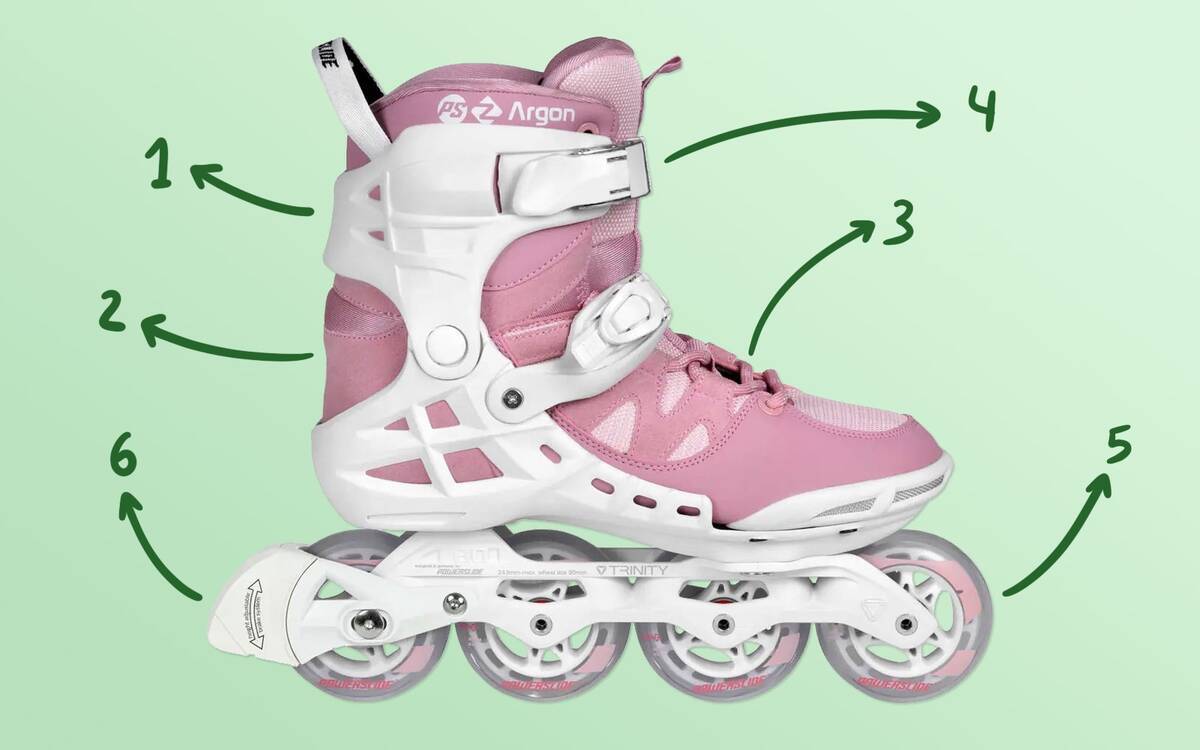Selecting Top Inline Skates for Beginners
When you're in the market for inline skates suited for beginners, prioritizing comfort and stability is vital to enjoy a rewarding skating journey. To guide you through the numerous choices for your initial inline skates, we've assembled key advice in this resource. You will find all the essential information you need to make the right choice for beginner inline skates.
Our lineup of inline skates includes a fantastic selection specifically designed for beginners. Skates suitable for beginners are usually categorized as recreational or fitness inline skates. These descriptions generally suggest that the skates are crafted for general-purpose usage rather than specific activities like speed skating or aggressive skating. They are perfect for commuting, fitness, and leisurely enjoyment, merging performance with comfort.
Overview
Which Inline Skates Are Best for Beginners?

When picking beginner inline skates, consider these features for top performance and comfort:
- High cuffs for side support: These provide stability and ankle support.
- Foam-breathable liners: They ensure comfort and airflow during use.
- Variety of lacing: Traditional laces, speed lacing, or BOA systems for a snug fit.
- Powerstrap and buckle: Secures your foot in place firmly.
- Small wheel diameter (up to 90 mm): Offers better control and handling for beginners.
- Heel brake: Essential for speed management and safe stopping.
Our selection of inline skates caters to beginners of all ages and preferences. We suggest sorting the options by skill level when you explore one of our inline skate categories.
Guidelines for Sizing Inline Skates for Beginners

Selecting the right size is essential as you embark on your wheels adventure. When purchasing skates online, adhere to the size chart for the model you're considering and pick your skates based on precise foot measurements.
To accurately measure your foot, begin by setting your heel against a wall. Measure the space from the wall to your longest toe, ensuring the measurement is taken at a 90-degree angle from the wall.
Steps for Accurate Foot Measurement
- Utilize a firm, even surface: Stand with your back against a wall on a solid, level surface for precise measurements.
- Wear intended skating socks: Measure your feet while wearing the socks you'll use with your skates.
- Fix a piece of paper to a wall: Place a sheet of paper on the floor with its edge tightly against the wall.
- Stand upright: Stand with your heel against the wall and your foot flat on the paper.
- Mark the toe end: Make a mark on the paper at the end of your longest toe.
- Measure both feet: Check the size of both feet as one is often slightly larger. Use the larger measurement to choose your skate size.
Find your ruler and measure the foot length on the paper. You've now determined your mondopoint size, which will assist you in interpreting inline skate size charts.
Ideal Fit for Inline Skates

Inline skates should fit snugly without causing discomfort. A proper fit affects how efficiently energy transfers from your legs to the skates. Consider these points when trying your first pair:
- Break-In Period: Expect an initial stiff feel, which will soften after a few uses.
- Secured Heel: Your heel should feel firmly positioned with minimal rise while skating. An effective heel lock enhances control and reduces blister formation.
- Toe Proximity: Your toes should nearly touch the skate tip without being cramped, allowing slight movement.
- Support for Ankles: Ankle areas should feel supportive without being so tight that circulation is impeded. You should bend your knees comfortably without discomfort.
- Closure Systems: Adjust laces, buckles, and straps for a secure fit. Skates should be tight enough to secure your foot but also allow for adequate blood flow.
Breaking In Your Inline Skates
As a novice, your feet are entirely new to wearing skates. Even if they fit perfectly, there will be a break-in period. Your feet, ankles, and shins need to develop resistance over time.
Ease this adjustment with these tips:
- Go at Your Own Pace: The break-in phase can span a month of skating. Start with shorter sessions, gradually extending them. Anticipate initial discomfort as your feet and ankles adapt.
- Relaxation of Feet: Focus on easing your feet while skating, and avoid excessively tightening laces or straps.
- Prevent Blisters: Test various socks to determine the most comfortable for skating. Insoles can be helpful, and using different types of socks could be beneficial. Footies might significantly reduce blister issues, especially near the heels and ankles.
If persistent pain occurs, seek medical consultation. Enjoy as your skates integrate seamlessly with your feet and skating style.
Learn more from our article on insoles, foot care, and breaking in new skates:
Beginner's Guide to Braking on Inline Skates
For beginners, inline skates generally include brakes at the back, mostly as a heel brake. This setup presents an advantage for novices because breaking with a heel brake naturally aligns with their learning curve in skate control. Thus, a traditional heel brake simplifies and secures the braking experience for newcomers.
Essential Protective Gear for Beginner Inline Skaters

Wearing protective gear is crucial for safety while inline skating. Beginners should have this safety gear:
- Helmet: A proper-fit helmet is vital to protect against head injuries.
- Wrist Guards: These provide cushioning and reinforcement to prevent wrist injuries after falls.
- Knee Pads: They guard your knees from cuts, bruises, and breaks.
- Elbow Pads: Elbow pads offer protection against impacts and scuffs.
Using this protective gear minimizes injury risks and enhances enjoyment during inline skating.
Investing in protective gear is integral to a safe inline skating experience. We recommend all beginners equip themselves with inline skating protective gear.

